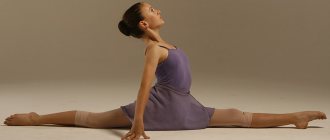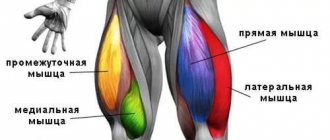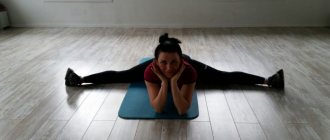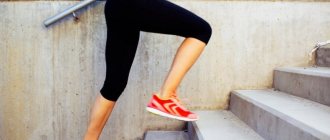The famous dancer and choreographer Evgeny Gorenyatenko says
— There are two main types of twine - dynamic and static. Dynamic is a vertical split, or a standing split. Static is a split performed in a horizontal position while sitting on the floor. I will tell you about the basic exercises with which you can do the static splits. And from it to dynamic it will not be so far. Below are my basic rules for the perfect split.
Article on the topic Unstable gymnastics. We work muscles in an unusual way
WHY DO YOU NEED STRETCHING?
Stretching has become especially popular recently.
Stretching classes are needed not only to do the splits or stand on a beautiful bridge. With age, muscle elasticity decreases and the range of joint movements decreases. Strong, strong and at the same time well-stretched muscles will allow the joint to work fully, to move along the full amplitude inherent in nature. This will prevent various diseases that make themselves felt with age. Stretching helps relieve tension, relieve back and neck pain, and tired legs. Good flexibility gives freedom of movement and reduces the risk of injury both when playing sports or dancing, and in normal everyday life. What’s especially nice is that stretching classes have no age restrictions, because you want to have a strong, flexible, beautiful body at any age. SCHEDULE
PRICES
REGISTER FOR A TRIAL LESSON
Stretching as preparation for the splits
Before doing the splits, you need to warm up thoroughly. You can jump rope, perform a set of yoga asanas, and do joint gymnastics exercises. Then you need to start stretching.
It is important to prepare the entire musculoskeletal system, and not just stretch the leg muscles, otherwise there is a high risk of injury to the shoulders, back and pelvis. Stretching exercises should be smooth and training should be gradual. For beginners, jerking and strong pressure on the ligaments are prohibited. You can focus on the pain sensations - they should be tolerable. If you feel cutting and tearing sensations, severe pain in the joints, the exercise should be interrupted.
Trainers recommend doing the following exercises:
- Bend over with your hands locked behind your back. You need to raise your arms up so that there is an angle of 90 degrees between them and your back. In this position, you need to bend over and at the same time pull your chest towards your knees. Make sure your legs remain straight.
- Bends to the leg from a sitting position. Stretch your legs and spread them as far apart as possible. Then bend one leg and place it on your side so that your foot rests on the thigh of the opposite limb. Begin to place your upper body on your outstretched leg, reaching your hands towards your foot.
- Lunges while lying down. Performed alternately on both legs. Take a lying position, bend one leg and move it as close as possible to the opposite hand.
- Side plank. This exercise helps strengthen the oblique muscles of the abdomen and hips, and is great for maintaining balance. Lean on your right arm bent at the elbow, place your left leg on your right. Then lift your pelvis and extend your body into a straight line. Stay in this position for as long as possible, from 15 seconds. The exercise is performed alternately on each side.
- Half split with your back. Lie on your back, stretch your arms along your body. Bend one leg, lift the other and grab your foot with both hands. Keep your leg straight, do not turn your pelvis. Perform 5 approaches on each leg.
WHY DO YOU NEED SPLIT?
Twine is present in many sports (figure skating, gymnastics, etc.), in martial arts, as well as dances (strip plastic, modern jazz, pole-dance, tango, hustle, etc.).
However, stretching is not just for athletes. Stretching to the splits improves the mobility of the pelvic joint, has a positive effect on the intestines and genitourinary system, improves blood supply to the thighs, which in turn helps in the fight against cellulite. Well-stretched thigh muscles relieve stress on the joints. For example, stretching the hamstring muscles relieves stress on the knee joint, allowing for proper weight distribution when walking, which will help prevent many knee diseases (see the article “Stretching therapy or splits for heels”). A well-stretched quadriceps (the front surface of the thigh, which is pulled during the longitudinal split) will help maintain correct posture and a healthy spine. People who engage in sports and stretching age more slowly and remain healthy and active longer.
In addition to all these scientific factors of the benefits of splits for the body, there is also a simple, human one: the production of endorphin - the hormone of happiness in connection with the pleasure received from feeling your toned, flexible body. Feelings of self. There is not a single person who has a beautiful, fit, flexible body who would ask the question “Why is this necessary?”
WHAT WILL BE REQUIRED FOR THE CLASSES?
To do the splits you will need:
- Sports uniform
(T-shirt, T-shirt, leggings, sweatpants, socks). For the warm-up, it’s better to dress lighter: a T-shirt/t-shirt and leggings, and for the stretch itself, put something warm on top to keep warm. These could be sweatpants, leg warmers, wool shorts, or a sweatshirt. It is advisable to exercise in socks rather than barefoot, again to keep your feet warm, which is extremely important to avoid injury. - Warm room
. It is important to practice in a well-ventilated but warm room. In a cold room, the muscles will quickly cool down and contract; in a warm room, they will retain heat and relax. - A mat or blanket for practicing on the floor
. You don't have to buy a special yoga mat if you stretch at home. A home carpet or bedspread is perfect. Many exercises are performed while sitting on the floor. Even if it’s warm in your home (if you stretch on your own at home) or in the dance hall (if you go to classes at professional sports institutions), be sure to lay something on the floor. It is necessary to keep warm, then the process will go faster. In addition, well-warmed muscles can easily get cold on a cold floor. - Yoga cubes
. Special blocks for yoga are not a mandatory attribute. But they will help you with some exercises. They can also serve as a support if you have just started doing the splits. When studying at home, they can be replaced by regular books. - Elastic band
. It will also help when performing some elements if you have poor flexibility, or vice versa, it will help increase the amplitude if your independent efforts are no longer enough to deepen the splits. At home, you can replace many elements with a regular scarf or a light towel.
Twine exercises
Lunges
Having taken the necessary position for lunges, the knee of the back leg must be lowered to the floor, the shin of the front leg is in a perpendicular position, the knee does not need to be moved forward. Go as low as possible to bring your pelvis as close to the floor as possible.
Lunge with leg grab
In the lunge position, you need to lower your hands to the floor. The bent left leg must be grabbed with the right hand, turning the body as shown in the figure. This pose has a good effect on the muscles for stretching for longitudinal splits.
Lizard
While remaining in the lunge position, place your hands on one side of your feet. If you have flexibility, you must strive to lower yourself onto your elbows. By performing this exercise, the muscles will stretch more and more to get closer to the final goal - the splits.
Bends to straight leg
Again, from the lunge position, the front leg is leveled, the arms are lowered to the floor, and the back is straight. The sensation should concentrate on the hamstring with a feeling of stretch. This is very important for transverse and longitudinal splits; you must gradually move your leg forward to achieve greater flexibility.
Pigeon pose
In the lunge position, the front leg lowers to the floor and rotates to the side. The lower leg and thigh lie completely on the floor, and the foot is located near the pelvis. Next, the pelvis stretches forward and towards the floor; you should not turn it to the side. The pelvic bones are directed forward. If possible, you need to lower your hands to the floor.
Advanced pigeon pose
The previous pose is complicated by pulling the back leg towards the body. The pelvis stretches toward the floor without rotation. If flexibility is insufficient, skip it and perform only pose No. 5 for now.
Leg lift
You need to lie on your back, using an elastic band, towel or belt, lift your leg up and pull it towards you. The leg is straight at the knee tendons, which will allow you to feel the stretch in the hamstrings and biceps. The second leg lies on the floor fully straightened; if the exercise is too difficult, it can be slightly bent.
Taking the leg to the side
In the same lying position, you need to use an elastic band to move your leg to one side, then to the other. It is necessary to ensure that both legs are straightened at the knees in order to stretch the muscles more.
Fold
A fairly popular type of exercise, you need to make sure that you need to go down to your legs with the abdominal area, and not with your back and neck, this is the only way to stretch the hamstrings. Keep your back straight; if you can’t reach your feet with your hands, then use a towel.
Dog
A popular exercise in yoga, when performed, it effectively stretches the hamstrings and biceps of the thigh.
Dog with raised leg
Having taken the pose of the previous position, you need to strictly vertically raise your leg up. The knees are pulled up, the legs are straight, and together the back and legs create a slide.
Tilts to the side
When performing the exercise, 2 legs are straight. The depth of the side lunge depends on the degree of stretching. To maintain balance, you can use your hands to lean on the floor, while keeping your back straight. The entire surface of the feet is on the floor. If it is difficult to keep your back straight, you can lean on a chair.
Side Lunge
Having taken the side lunge position, the pelvis must be lowered as low as possible; the depth of the lunge directly depends on the degree of stretching. The back does not hunch; do not forget that during a squat the knee joint should not extend beyond the toe.
Garlyadna
Squat down as deeply as possible and rest your elbows on your knees. While maintaining balance, you need to stay in this position for as long as possible, feeling the stretch in the groin area. Again, pay attention to your knees, they should be strictly under your toes.
Butterfly
An excellent exercise, but too difficult to perform if the hip joints are not flexible enough. The main condition is a strictly straight back, the heels must be kept as close to the groin as possible.
Frog
Good for cross splits, you need to spread your legs on all fours, resting on your forearms. While standing, you must strive to spread your legs a little wider each time.
Bend to the side with legs spread
After completing the preparatory exercises to warm up the hip muscles and hamstrings, proceed to the basic exercises. Sitting on the floor, spread your legs as wide as possible without rounding your back. Next, you should perform alternating tilts left and right. As you bend over, you will feel your muscles stretching.
Bend forward with legs spread
Having finished bending to the side, tilt your body forward, watch your back, it should be straight, this way the muscles can be felt and stretched stronger. After bending, try to spread your legs as wide as possible.
Deep squat with legs spread
To perform this, you need chairs or blocks; leaning on them, you should increasingly perform a deep squat. Having reached the maximum spread of your legs, stay in this position, making sure that your legs do not bend at the knees. Avoid sharp pain; if it occurs, stand up a little. The condition should be mild discomfort. Also, do not rise sharply from the splits; all movements are smooth and careful.
HOW MUCH DO YOU DO TO DO THE SPLIT?
In order to do the splits, you need to practice at least 2 times a week.
Exercising once a week will only help maintain your current results. For example, if you have already done the splits and want this result to stay with you forever, continue doing the splits at least once a week. After all, muscles tend to contract and “forget” the results achieved. We didn’t work out for just a couple of weeks and the results rolled back. Don't forget that with age, muscles become less elastic. Therefore, if you did the splits at the age of 30 and abandoned classes, at the age of 32 you will have to do the splits again. So, to maintain the results, we stretch at least once a week. To do the splits, we stretch at least 2 times a week. It’s best to start with 2 times a week and gradually increase your workouts to 3-4 times a week.
Is it possible to exercise every day? Can. If your body has time to rest between workouts, and if you are prepared for such a training schedule (for example, you play sports, dance, or have been stretching for a long time and know well the capabilities of your body). Listen carefully to yourself. Muscles need rest, otherwise regression will occur.
Types of twine
Longitudinal - when performing this type of split, one of your legs should be put forward and the other back. It turns out that your legs will be on the same line and will, as it were, continue each other.
Transverse - in this form, your legs will diverge to the sides. To perform this type of split, you will need much more effort.
HOW LONG DOES IT TAKE?
The training consists of 2 mandatory parts:
- Warm-up
- Stretching
The time for the first and second parts is strictly individual.
Time to warm up
. For someone who has soft muscles, or who has been doing gymnastics for a long time, a ten-minute warm-up is enough. For someone with stiff muscles, even an hour to warm up may not be enough. During the warm-up, it is important to warm up all the muscles, even the deepest ones, as well as all the joints. For what? So that, firstly, the muscles stretch better, the exercise is more effective, the result is achieved faster, and secondly, to avoid injuries. So, it can take from 10 to 60 minutes to warm up. Try, analyze, carefully listening to your body. If you are involved in dancing or sports, it is best if you stretch for the splits immediately after the main workout. Then the time for warming up can be reduced (due to the fact that the body is already warmed up). Never stretch without warming up, otherwise you can injure your muscles.
Time to stretch
. Start small if you are still a beginner. Gradually expand the range of exercises, as well as the time for fixing a particular position. If you have soft, elastic muscles, you can fix the position in a particular exercise for about 30 seconds. If the muscles are stiff, the fixation time may take up to 3 minutes. Carefully stop fixing if you feel that the muscle is starting to tighten or the pain is becoming severe, and also if you are afraid that you may overtighten and injure the muscle. The sensations should be pleasant. It is important to learn to distinguish between normal work pain and traumatic pain. Remember: when in doubt, stop. Gradually, you will be able to develop your own training schedule, choose the optimal time for warming up and stretching, as well as your own set of exercises that will help you do the splits quickly. On average, stretching time can take from 20 to 60 minutes.
Myth 5. You don’t need to warm up too much before stretching.
Warming up is necessary: before stretching, the body should be prepared in the same way as before any workout.
Elena Vorobyova Pilates and dance teacher
4,98 56
Open profile
Cold stretching is a popular marketing technique designed for the comfort of clients. Professionals do not use this method; it contradicts muscle biomechanics. It is impossible to stretch them when they are hard and cold. When warming up, you should begin to sweat lightly - this means that the blood flow has activated, the muscles and ligaments have become more elastic.
STRETCHING RULES
To do the splits, you need to train competently and correctly. Otherwise there is a risk of injury. Inept attempts to stretch into a longitudinal, and even more so a transverse, split can result in stretching or even micro-tears of muscles, injuries to ligaments or joints. In order not to harm yourself when trying to do the splits on your own (while practicing at home, and not under the supervision of a trainer), it is important to follow a number of rules.
- Wherever you stretch: at home or in the gym, before stretching you need to do a warm-up
. It is important to warm up all muscle groups and prepare the body for further training. The muscles should become “plasticine” and the joints should be properly warmed up. - Do not hurry
. Everyone’s body is different, and some will be able to do the splits in 1 month, while others will need 5 years. You don't want to hurt yourself by chasing results. The slogans “splits in a month” or “splits in a week” are just a marketing ploy to attract customers to gyms. In fact, the period during which you can do the splits is strictly individual and depends on a huge number of different factors, ranging from your age, muscle elasticity, the structure of the hip joint, to the amount of fluid you consume per day. - Exercise regularly
. Create your own training schedule and strictly follow it. Rare chaotic activities will not lead to results. - Try to drink more water
. With a lack of fluid, muscles become less elastic, more susceptible to injury, and have poor stretch. - Don't throw yourself into the pool headlong
. Start with 2 times a week for half an hour. Gradually increase your training time by introducing additional exercises and increasing the time of fixation in one position or another. Don't trust the internet, trust your feelings. Fix the position as long as you need. And for this: - Find out your strengths and weaknesses
. All people have completely different joint structures, different elasticity of muscles (for some they are soft, like plasticine, for others they are hard, with practically no stretch). Some people, for example, have a naturally well-stretched front surface of the thigh, but have huge problems with the back and inner surface, while others, on the contrary, have a “crease” without any problems, but stretching the front surface is difficult and extremely painful. Some people have natural eversion, while others, on the contrary, have it completely absent. Therefore, a set of exercises that suits one person is not a fact that it will suit another. That is why you need to clearly understand the characteristics of your body, understand exactly what problem areas you have that do not allow you to quickly do the splits. After this, choose the most effective set of exercises for yourself. - Watch your joints
. During the split stretch, you should feel your muscles stretching. There should not be any pain in the joints. If you feel pain in a joint, stop the exercise immediately. Joint pain can only mean one thing: You are doing something wrong. And this can lead to injury. - Learn to relax
. When stretching into the splits, the muscles try to resist, tense, and this is an unnatural state for them. The reduction occurs automatically. This is designed by nature to prevent injury if the muscles are stretched beyond their normal range. To do the splits, you need to learn to relax while performing the exercise, then the muscles will stretch gently and safely. - Practice to the music you love
. The influence of music on our body is enormous and scientifically proven. Music varying in tempo, harmony, and volume can raise or lower blood pressure, speed up or slow down the pulse, lift your spirits or make you sad, invigorate or soothe and relax. - Sign up for group classes
. Since man is a social being, classes in a circle of like-minded people will be much easier and more effective, they will support you morally and further motivate you. And competent trainers will help you avoid injuries.
Features of cross twine
Those who have already mastered the side split can start working on how to quickly do the side split. It should be noted that this is quite difficult. It happens that a person can do a longitudinal split in a few weeks, but transverse stretching is possible only after a year of regular training.
To master cross splits, do the following exercises :
- Perform all stretches not in the longitudinal, but in the transverse direction. Their dynamic load will benefit from side swings.
- Try to move from the longitudinal position to the transverse one. For example, lift your leg onto the bar to stretch longitudinally, and then, without removing your feet, turn your body to face the barre, in a transverse position.
- If you are already doing the longitudinal splits, use a bench or chair to enhance the stretch. You need to stretch more than 180 degrees. Thanks to the additional support, you can go lower by increasing the stretch angle.
With these exercises you can achieve your goal. There may be times in your workouts when you feel like you're standing still. In this case, the main thing is not to give up and not stop studying. Continue to persistently perform the exercises, and one day you will still achieve the coveted splits.
Also, if you want to do the splits quickly, videos on this topic will be useful to you. We invite you to look at some of them.
WHAT EXERCISES TO USE FOR SPLIT STRETCHING?
Everything here is very individual and depends on the structure of your joints, muscle elasticity, level of flexibility and other factors.
A set of exercises that is suitable for one person may not be suitable for another. Therefore, if you study at home, try, analyze and try again. Better yet, sign up for stretching lessons in a specialized section or school, where professional trainers will help you choose a set of exercises depending on your characteristics. Remember that you can do the splits even at 60 years old, the main thing is not to dream, but to act. Start right now and you will certainly achieve success.
When is it better to postpone classes?
Not everyone can conquer the splits, and especially dream of doing it in 3 days. There are contraindications to stretching training. It is prohibited to practice if a person has:
- there are spinal injuries, ruptures of inguinal ligaments, diseases of the musculoskeletal system;
- inflammatory processes;
- a chronic disease is in the acute stage;
- joint diseases;
- muscle injuries;
- elevated body temperature.
Before devoting yourself to training, be sure to visit a doctor, get examined and consult whether you can train and stretch. If the doctor has given his consent, you need to exercise at the right time so as not to harm your body.
It is better not to eat anything 1 hour before training. Drink more fluids, review your diet. Choose positive musical accompaniment for yourself.
Be sure to be patient and in a good mood. Don’t strive to become a real gymnast in three days, and don’t be upset if results don’t appear in one month. Understand that rushing in this matter will not lead to anything good.
Approach your classes responsibly, and you will definitely achieve your goal - do the splits quickly and safely.











